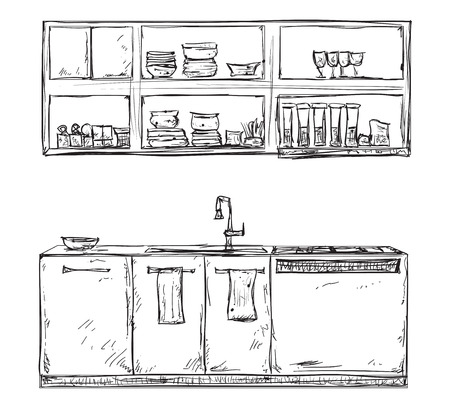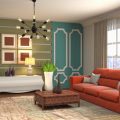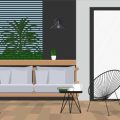Introduction to Maximalist Lighting in British Interiors
The resurgence of maximalist lighting is making a striking impact on British homes, blending both historic grandeur and contemporary flair. Once defined by the subtlety of classic Georgian and Victorian interiors, British lighting schemes have evolved dramatically, now embracing bold statements through layered illumination. This approach involves thoughtfully combining ambient, accent, and task lighting to create spaces that are visually dynamic, practical, and inviting. The renewed interest in layering light stems from a desire to break free from minimalist monotony, allowing homeowners to express personality and heritage while enhancing comfort. In today’s Britain—from charming period terraces to modern city flats—layered lighting is not just a functional necessity but an artistic tool for storytelling and atmosphere. This trend honours the British tradition of eclecticism, drawing inspiration from ornate chandeliers of stately homes as well as the playful use of colour and texture found in contemporary design. As more people seek to personalise their living spaces, maximalist lighting offers a creative solution rooted in both history and innovation.
2. The Role of Ambient Lighting in Creating a Cosy Home
Ambient lighting forms the very backbone of maximalist lighting schemes in British homes. Unlike stark, overhead illumination, soft and diffused lighting sets the stage for comfort and conviviality, echoing the traditional interiors that define much of British domestic life. This approach resonates deeply with the British love for all things cosy—think warm evenings by the fire, plush armchairs, and rooms that invite you to linger. In recent years, concepts like hygge, borrowed from Scandinavian culture, have also found favour across the UK, reinforcing the importance of gentle background lighting in cultivating a sense of wellbeing.
The Importance of Soft Diffusion
Soft, ambient light not only reduces harsh shadows but also helps to blur architectural edges, making spaces feel more intimate. Historically, British homes have embraced this style through lampshades, wall sconces with fabric coverings, and even frosted glass fixtures—all designed to temper glare and create a welcoming glow. Such practices are as relevant today as ever, especially in period properties where retaining a sense of tradition is key.
Common Ambient Lighting Solutions in British Homes
| Lighting Type | Description | Typical Placement |
|---|---|---|
| Lamps with Fabric Shades | Diffuse light softly; enhance warmth and texture | Living rooms, bedrooms, hallways |
| Wall Sconces | Provide gentle uplighting or downlighting; often paired with dimmers | Corridors, dining rooms, stairwells |
| Pendant Lights (with diffusers) | Create a central pool of light; reduce direct glare | Kitchens, sitting rooms |
| Candlelight & LED Candles | Add an atmospheric touch reminiscent of heritage homes | Mantelpieces, dining tables, bathrooms |
Layering for Maximum Cosiness
In maximalist British interiors, layering several sources of ambient light is crucial. Rather than relying on a single ceiling fixture—which can feel clinical—combining table lamps with wall lights and concealed LED strips allows homeowners to tailor the mood as daylight shifts or guests arrive. This thoughtful layering not only celebrates eclecticism but also ensures every corner feels inviting, regardless of time or season.
![]()
3. Accent Lighting: Showcasing British Character
Accent lighting is where maximalist lighting truly comes alive in British homes, allowing you to celebrate the unique architectural details and personal touches that make a space unmistakably yours. In the UK, homes often feature a fascinating blend of historic features and contemporary quirks. Think Victorian cornices, ornate ceiling roses, intricate mouldings, or even those slightly wonky alcoves that give period properties their charm. By layering accent lights such as wall sconces, picture lights, and uplighters, you can highlight these elements and add an unmistakable sense of character.
Wall Sconces: A Nod to Tradition
Wall sconces have long been a staple in British interiors. They provide gentle pools of light that draw attention to textured wallpapers, exposed brickwork, or even treasured collections displayed on shelving. Opt for brass or antique finishes to echo classic British style, or choose bold contemporary designs for a more eclectic maximalist approach.
Picture Lights: Framing Your Story
No British home is complete without art prints—whether it’s a vintage railway poster, a moody Turner reproduction, or family portraits. Picture lights mounted above your artwork not only illuminate the pieces themselves but also bring a gallery-like atmosphere into your living space. The warm glow creates focus while adding layers of visual interest that embody the spirit of maximalism.
Uplighters: Elevating Architectural Features
Uplighters are particularly effective for drawing the eye upwards to appreciate features like high ceilings, decorative cornicing, or original beams. In darker corners or tucked beneath large houseplants, uplighters can create drama and depth—a key component of maximalist design. For British homes with quirky layouts or unexpected nooks, these fixtures help ensure every inch is celebrated rather than overlooked.
Ultimately, using accent lighting thoughtfully allows you to express your personality through your home’s architecture and décor. By shining a literal spotlight on the details that make your space unique—from period features to beloved oddities—you embrace both tradition and individuality in true British maximalist style.
Task Lighting for Everyday British Living
When it comes to maximalist lighting in British homes, task lighting is essential for supporting daily activities while complementing the layered approach of ambient and accent lighting. In the UK, where homes often feature smaller rooms and multi-functional spaces, the thoughtful integration of task lighting transforms kitchens, reading nooks, home offices, and crafts areas into both practical and visually appealing environments.
Kitchens: Precision Meets Tradition
British kitchens are often the heart of the home—a space for preparing meals, entertaining guests, and even catching up on paperwork. Under-cabinet LED strips or adjustable spotlights provide focused illumination on worktops, ensuring safe food preparation regardless of the time of day. For a touch of classic British charm, brass or matte black wall-mounted lamps above the sink or cooker blend utility with heritage design sensibilities.
Task Lighting Options in Kitchens
| Lighting Type | Best Use | Design Note |
|---|---|---|
| Under-cabinet LEDs | Food prep areas | Sleek & energy-efficient |
| Pendant lights | Kitchen islands/breakfast bars | Adds visual interest; choose opal glass for diffused light |
| Wall-mounted lamps | Sinks & cookers | Classic or industrial styles suit British interiors |
Reading Nooks: Cosy Corners with Character
The British love of literature is legendary, making well-lit reading nooks a common feature in many homes. Adjustable floor lamps or articulated wall sconces beside armchairs offer directed light without overwhelming the space. Look for fixtures with fabric shades in tweed or floral patterns to add warmth and a touch of quintessentially British style.
Home Offices: Productivity with Personality
With remote work increasingly common across the UK, dedicated home office spaces require tailored lighting solutions. Desk lamps with dimmable LEDs allow users to adjust brightness according to task and time of day. Integrating classic banker’s lamps or contemporary anglepoise designs reflects both tradition and modernity—key characteristics of British interior preferences.
Popular Task Lighting for Home Offices
| Lamp Style | Main Advantage | Cultural Fit |
|---|---|---|
| Anglepoise lamp | Highly adjustable; iconic British design | Timeless; matches both modern & vintage decor |
| Bankers lamp | Soft, focused light; green glass shade reduces glare | Nods to classic study aesthetics found in period properties |
| Dimmable LED desk lamp | Customisable brightness; energy saving | Suits contemporary lifestyles & eco-conscious values |
Craft Areas: Creativity Illuminated
Crafters and hobbyists benefit from bright, shadow-free task lighting. Clamp-on LED lights or daylight simulation bulbs are ideal for sewing tables, painting easels, or model-making stations. The flexibility to reposition lights ensures intricate work is never hampered by poor visibility—a must in often overcast British weather. Selecting lamps with heritage-inspired finishes allows these functional pieces to blend seamlessly with maximalist interiors rich in pattern and colour.
In Summary:
A considered approach to task lighting not only enhances functionality but also supports the layered look that defines maximalist lighting in British homes. By choosing fixtures that reflect local tastes—whether through timeless materials, iconic forms, or practical flexibility—homeowners can create spaces that are as useful as they are uniquely personal.
5. Mixing Fixtures and Styles: Embracing Eclectic British Flair
One of the hallmarks of maximalist lighting in British homes is a fearless approach to mixing fixtures and styles. Unlike minimalist schemes that favour uniformity, British interiors often celebrate an eclectic blend, reflecting a love for layered, personal spaces. Successfully achieving this look involves pairing vintage fittings—think brass wall sconces or Art Deco pendants—with contemporary designs such as sleek LED strips or industrial task lamps. The juxtaposition brings warmth and character, with each piece telling its own story.
Classic lampshades are particularly cherished in the UK, with pleated fabrics, fringed trims, and bold patterns regularly making appearances alongside modern glass globes or exposed bulbs. Don’t shy away from pairing a traditional banker’s lamp on a Georgian writing desk with a strikingly modern floor lamp nearby; this contrast creates visual interest and avoids a showroom feel.
When selecting bold lighting designs, consider how their scale and finish interact with your existing decor. Oversized chandeliers or colourful statement pendants can be balanced by subtler ambient lighting or understated table lamps elsewhere in the room. Opt for finishes that reference other elements in your space—a hint of antique brass echoing door handles, or a splash of colour picked up in your soft furnishings.
The British fondness for collecting means many homes feature heirloom pieces passed down through generations. Incorporating these into your lighting scheme not only adds depth but also honours tradition while keeping the look current with a few well-chosen modern additions. Ultimately, maximalist lighting should feel curated rather than chaotic—each fixture thoughtfully placed to enhance both function and personality in your home.
6. Energy Efficiency and Smart Lighting in the UK Context
When embracing maximalist lighting in British homes, it’s vital to consider the balance between visual impact and responsible energy use. The UK has clear regulations on energy efficiency, and integrating these principles ensures that your layered ambient, accent, and task lighting schemes remain sustainable.
The first step is choosing LED bulbs for all light sources. LEDs not only offer a broad spectrum of colour temperatures—ideal for creating distinct lighting layers—but also consume far less electricity than traditional halogen or incandescent bulbs. This aligns with UK government initiatives to phase out inefficient lighting products, making LEDs the practical choice for maximalist interiors.
Dimmers are another essential feature in British homes striving for both drama and efficiency. Installing dimmable switches allows you to adjust light levels according to mood or need, reducing power consumption during evenings or when full brightness isn’t necessary. It’s worth noting that many modern LED bulbs are compatible with dimmer systems, but always check product specifications to ensure smooth operation without flickering.
Smart controls have seen rapid adoption across the UK, enabling homeowners to fine-tune their layered lighting remotely via smartphone apps or voice assistants. These systems can be programmed to mimic natural daylight cycles, automatically lower intensity during off-peak hours, or even respond to occupancy sensors—features that prevent unnecessary energy wastage while enhancing comfort.
British homes often contend with unique architectural quirks—such as older wiring or period features—which may affect how smart systems are installed. Consulting a qualified electrician familiar with UK standards is crucial for retrofitting technology safely and legally.
By combining efficient LEDs, flexible dimmers, and intelligent smart controls, you can indulge in maximalist layering without compromising sustainability. Thoughtful integration ensures your home remains vibrant yet conscious of both running costs and environmental responsibility—a true reflection of contemporary British values.
7. Conclusion: Bringing it all Together in a British Home
Maximalist lighting is not merely about excess; it’s about crafting layers that serve both function and personality within your British home. Whether you’re working with a Victorian terrace, a modern flat, or a rural cottage, the principles of layering ambient, accent, and task lighting remain universally effective. To achieve this balance, begin by mapping out the activities and moods you want for each room. In living spaces, pair a central pendant or chandelier with wall sconces and table lamps to create zones for reading, socialising, or relaxing. Accent lighting—such as picture lights or uplighters—adds drama to architectural features and cherished collections. For kitchens and bathrooms, prioritise clear task lighting under cabinets or above mirrors, but soften the atmosphere with dimmable ceiling fixtures or discreet LED strips. Don’t be afraid to mix classic British fittings—think brass library lamps or glass lanterns—with bold contemporary pieces for a truly maximalist flair.
Practical Tips for Every UK Property
- Layer thoughtfully: Use three types of lighting in every room to ensure flexibility and depth.
- Mind the wiring: Older British homes may need professional advice before adding new circuits or fittings.
- Dimmers are essential: Install dimmer switches to control mood across various activities without fuss.
- Embrace local character: Incorporate period-appropriate fixtures in heritage properties while experimenting with statement shades or bulbs for a modern twist.
- Focus on placement: Place lamps near seating areas, reading nooks, or kitchen worktops to blend practicality with comfort.
The Final Word
The key to successful maximalist lighting in any British home is confidence: layer boldly but always keep purpose in mind. By combining ambient washes, pinpointed tasks, and expressive accents, you’ll ensure your space feels both inviting and uniquely yours—no matter if your windows overlook city rooftops or rolling countryside.


